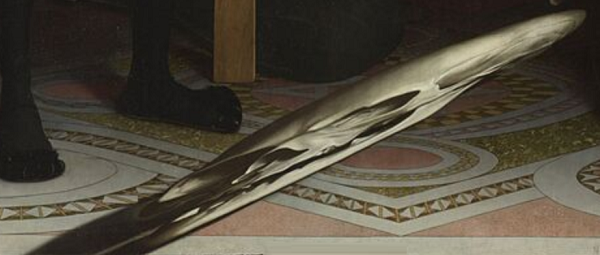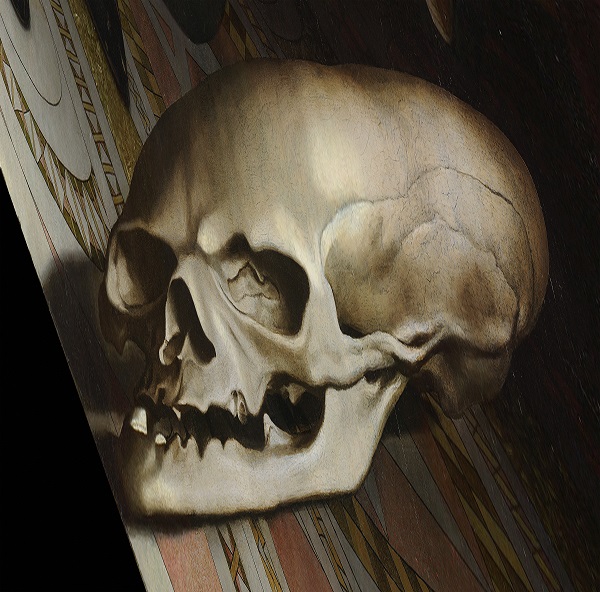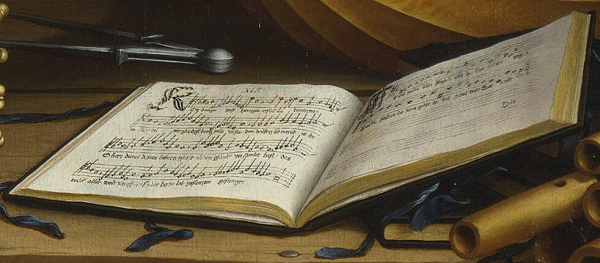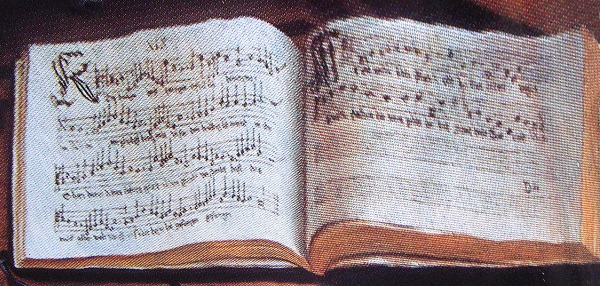Sunday surprise: peering digitally around corners 1: Holbein
[ by Charles Cameron — a saunter through London’s National Gallery with Holbein’s Ambassadors, a skull and a psalter ]
.
Let’s begin with Hans Holbein, The Ambassadors:
**
First up for consideration is this anamorphic skull detail:
The very oddly misshapen object in the foreground is in fact a skull, visible as such from the right position vis-a-vis the painting. It has puzzled countless people for ages, and no doubt considerably increased the painting’s fame in the process. The simplest explanation I’ve found is this one:
It has also been hypothesized that the painting is meant to hang in a stairwell, so that a person walking up the stairs from the painting’s right would be startled by the appearance of the skull. From such an angle, the skull appears in its correct aspect ratio.
Here’s the skull, resolved — to show it as it appears from the correct viewing angle — an angle from which the rest of the painting makes no sense, mark you:
**
That’s the most striking detail in the painting, but also of interest is this Psalter detail:
The psalter is depicted in the painting in the same perspective as the two figures, globe, carpet and so forth, but it’s at an angle to the viewer — and an enterprising fellow therefore decided to work computationnal magic and show us the psalter rectified, as we might see it if we were in the room, went over, and looked down at it:
**
All of this reminds me of another brilliant work of art, featuring an analogous shifting of viewpoint: Ridley Scott‘s Blade Runner, which I’ll explore in Part II of this two-part post.







